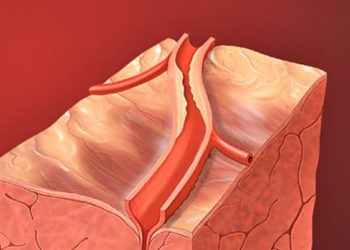Noncigarette tobacco product use is associated with future cigarette smoking
1. Never-cigarette-smoking youths who initiated tobacco use with noncigarette products including e-cigarettes, hookahs, noncigarette combustible tobacco, or smokeless tobacco were more likely to smoke cigarettes in the following year than those who did not use noncigarette tobacco.
2. Association with future smoking was similar across different noncigarette products, and was similar whether product use was former or current. Additionally, use of multiple products was associated with a higher likelihood of initiation of cigarette use than use of a single product.
Evidence Rating Level: 2 (Good)
Study Rundown: Use of noncigarette tobacco products by youths has increased recently, and there is concern that this may lead to increase in cigarette smoking. Previous studies have demonstrated associations of use of individual products such as e-cigarettes, smokeless tobacco, and hookahs with future cigarette smoking. However, this study was the first to directly compare these products, as well as compare use of a single product to polyuse of noncigarette products. Using the Population Assessment of Tobacco and Health (PATH) study population consisting of youth ages 12 to 17 years, the investigators studied use of noncigarette tobacco products among youths who had never used cigarettes at baseline, and assessed ever and past 30-day use of cigarettes one year later. Results showed that odds of cigarette use approximately doubled for those who ever used e-cigarettes, hookah, noncigarette combustible tobacco, and smokeless tobacco. Polyuse of two or more noncigarette tobacco products was associated with greater odds of cigarette smoking.
While the study used a large, nationally representative sample, the observational design limits determination of causality. Though this study did not determine how noncigarette tobacco products increase cigarette use, whether by nicotine dependence, changing perception of cigarettes, social mediators, or other factors, it sheds light on the need for policy changes to limit use of noncigarette tobacco products and prevent health risks associated with it.
Click to read the study, published in JAMA Pediatrics
Relevant Reading: Assessing 30-day quantity-frequency of U.S. adolescent cigarette smoking as a predictor of adult smoking 14 years later.
In-Depth [cohort study]: This study used a sample of 10,384 never-cigarette-smoking youths of ages 12 to 17 years from the Population Assessment of Tobacco and Health (PATH) study to determine the association between noncigarette tobacco product use and later cigarette smoking. They studied ever, former, and past 30-day use of noncigarette tobacco products in 4 categories: e-cigarettes, hookah, noncigarette combustible tobacco (bidis, cigarillos, filtered cigars, kreteks, pipes, and traditional cigars), and smokeless tobacco at baseline. One year later, they surveyed the same individuals about ever and past 30-day use of cigarettes.
The results were adjusted for sex, age, race/ethnicity, parental educational level, and urban residence to account for variation across sociodemographic groups. Results demonstrated that cigarette use initiation was associated with ever use of e-cigarettes (OR, 2.53; 95%CI, 1.80-3.56), hookah (OR, 1.79; 95%CI, 1.23-2.62), noncigarette combustible tobacco (OR, 1.64; 95%CI, 1.06-2.54), and smokeless tobacco (OR, 1.66; 95%CI, 1.00-2.76). Similar results were obtained for past 30-day cigarette use, and for both former and past 30-day use of each noncigarette tobacco product. Furthermore, baseline ever exclusive use (ever only use of a single noncigarette tobacco product) was also positively associated with cigarette smoking initiation, with the exception of smokeless tobacco, which was positively associated but not statistically significant (OR, 1.53; 95%CI, 0.56-4.19). Additionally, polyuse of tobacco products was associated with a greater risk for cigarette smoking initiation (OR, 3.95; 95%CI, 2.65-5.90) and past 30-day cigarette use (OR, 3.81; 95%CI, 2.22-6.54).
Image: PD
©2018 2 Minute Medicine, Inc. All rights reserved. No works may be reproduced without expressed written consent from 2 Minute Medicine, Inc. Inquire about licensing here. No article should be construed as medical advice and is not intended as such by the authors or by 2 Minute Medicine, Inc.







